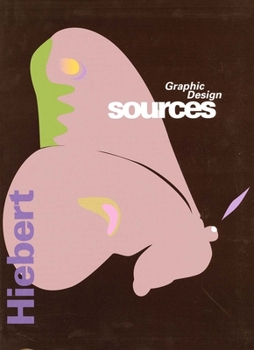Graphic Design Sources
Select Format
Select Condition 
Book Overview
In this visually exciting book, an award-winning graphic designer and teacher addresses students, educators, computer graphics users, practicing designers, and others seeking to understand the principles and process of good design. Kenneth J. Hiebert extends the innovative approach he used in his previous book, Graphic Design Processes, showing how inventive graphic design arises from diverse stimulus sources. Interweaving theory and concrete, creative activity, he demonstrates the integration of such stimuli as nature, music, personal experience, statistical data, vernacular expression, and architecture in well-designed work. With clear explanations and hundreds of revealing illustrations, Hiebert discusses and demonstrates the process of design creation: first finding more universal and latent beginning points inherent in sources, then engaging in a thought process that leads to fresh and unpredictable interpretive results. He explains how to use the computer as an enabling tool while avoiding the clich forms of obvious computer-generated design. When designers understand how to meld form, technique, and communication, Hiebert says, design becomes an exciting personal process, independent of stylistic trends.
Format:Hardcover
Language:English
ISBN:0300074611
ISBN13:9780300074611
Release Date:March 1998
Publisher:Yale University Press
Length:224 Pages
Weight:2.05 lbs.
Dimensions:0.7" x 8.3" x 11.3"
Customer Reviews
2 ratings
Growing uniqueness through process - an ultimate guide.
Published by Thriftbooks.com User , 26 years ago
With a clear structure and intention, Hiebert builds a poignant case for a process oriented cure to arrive at the essence of communicative form. This case built around gaining `sources' beyond predictable means. Designed by Hiebert, using his own studies and his student's work, the book concretely puts into action the topics discussed.Hiebert's intentions are well laid in the introduction. He discusses many of his observations surrounding graphic design. Design's formal aspects, interdisciplinary nature, current dilemmas, and educational strategies are all encompassed. Interwoven in this introduction is his case for crossing boundaries for revitalization. This, the major premise of the book, is exactly what unfolds in seven diverse chapters. To quote the ending passage of the introduction: "In this book, graphic form-giving is sought by looking across boundaries into other domains. This is more than looking for inspiration. It is opening ourselves to a larger world and a larger vision. It is not a how-to-do-book, a formula for doing things. It's about the process of doing. You will have your own explorations and discoveries."Hiebert approaches like a seasoned surgeon. He offers an analysis of conditions leading to this problem and a diagnosis to remove this problem. Content and the various `sources` lead to solutions which are gauged by appropriateness of subject and communicative meaning. In this feast of visuals book, all the examples are astounding testaments to the power of this process and Hiebert's wisdom. Through analysis, development of visual contrasts and visual encoding, dynamic solutions arise and become powerfully semantic. This as Hiebert states, "Expression is the goal of communication. It should not be confused with mere effect." Hiebert, similar to his prior book, masterfully structures the typography to create an interactive duality of texts. This managed complexity of this level is seldom seen in contemporary graphic design. Many points are strengthened through this synthesis of form and content. Graphic Design Sources is a very significant contribution to all design fields and should not be limited solely to graphic designers. The book is timely as the computer dominates as a design tool in our quick-fix and fast paced society. Often is the case where a detrimental one iteration is developed directly on the computer. Hiebert embraces the computer and offers a method for its appropriate integration to the process. He also reminds us of the power of starting with the pencil. Hiebert more than adequately accomplishes his goals. Broadly summarized, to quote the back cover endorsement by design historian Douglass Scott, "Hiebert's project-based explanations are fascinating deconstruction that make sense and demystify the process of design."
Very good
Published by Thriftbooks.com User , 26 years ago
An exploration into the difference techniques and associations into various design styles applied to similar subject matter. It's very interesting to see the wide range of end results from a similar starting base. Very good, and useful for getting around "designers block". Most stuff is great, some is a little dated.






